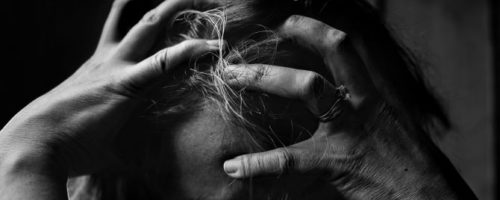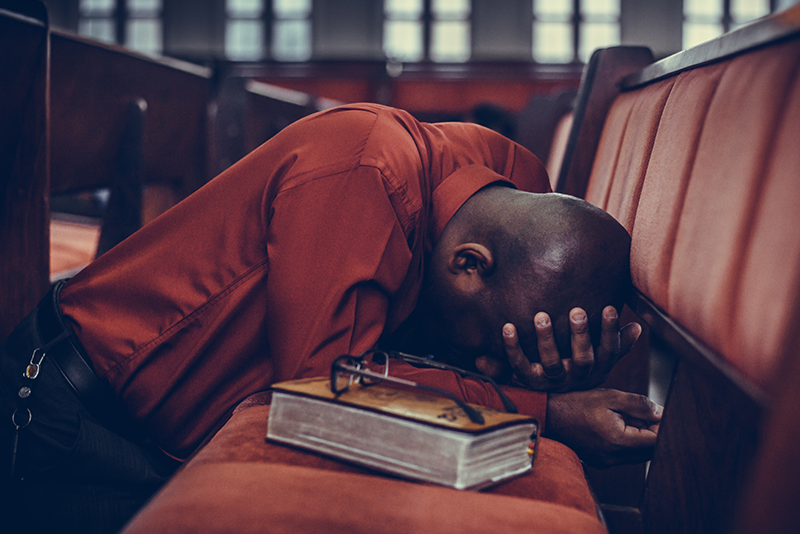

If you’ve ever experienced a sudden surge of overwhelming anxiety and fear then you’re familiar with the feeling of having a panic attack. Your heart pounds, you can’t breathe, and you may even feel like you’re dying or going crazy. Left untreated, panic attacks can lead to panic disorder and other problems. They may even cause you to withdraw from normal activities. But panic attacks can be cured and the sooner you seek help, the better.
What is a panic attack?
A panic attack is an intense wave of fear characterized by its unexpectedness and debilitating, immobilizing intensity. Panic attacks often strike out of the blue, without any warning, and sometimes with no clear trigger. They may even occur when you’re relaxed or asleep.
You may experience one or more panic attacks, yet be otherwise perfectly happy and healthy. Or your panic attacks may occur as part of another disorder, such as panic disorder, social phobia, or depression. Regardless of the cause, panic attacks are treatable. There are strategies you can use to cope with the symptoms as well as effective treatments.
PANIC DISORDER SYMPTOMS:
Anticipatory anxiety – Instead of feeling relaxed and like your normal self in between panic attacks, you feel anxious and tense. This anxiety stems from a fear of having future panic attacks. This “fear of fear” is present most of the time, and can be extremely disabling.
Phobic avoidance – You begin to avoid certain situations or environments. This avoidance may be based on the belief that the situation you’re avoiding caused a previous panic attack. Or you may avoid places where escape would be difficult or help would be unavailable if you had a panic attack. Taken to its extreme, phobic avoidance becomes agoraphobia.
Panic Disorder with Agoraphobia
Agoraphobia was traditionally thought to involve a fear of public places and open spaces. Because of these fears, you start avoiding more and more situations.
For example, you may begin to avoid:
- Crowded places such as shopping malls or sports arenas.
- Cars, airplanes, subways, and other forms of travel.
- Social gatherings, restaurants, or other situations where it would be embarrassing to have a panic attack.
- Physical exercise in case it triggers panic.
- Certain food or drinks that could provoke panic, such as alcohol, caffeine, sugar, or specific medications.
- Going anywhere without the company of someone who makes you feel safe. In more severe cases, you might only feel safe at home.

Causes of Panic Attacks and Panic Disorder
Although the exact causes of panic attacks and panic disorder are unclear, the tendency to have panic attacks runs in families. There also appears to be a connection with major life transitions such as graduating from college and entering the workplace, getting married, or having a baby.
Self-help tips for panic attacks
No matter how powerless or out of control you may feel about your panic attacks, it’s important to know that there are many things you can do to help yourself. The following self-help techniques can make a big difference to helping you overcome panic:
Learn about panic and anxiety. Simply knowing more about panic can go a long way towards relieving your distress. Read up on anxiety, panic disorder, and the fight-or-flight response experienced during a panic attack. You’ll learn that the sensations and feelings you have when you panic are normal and that you aren’t going crazy.
Avoid smoking, alcohol, and caffeine. These can all provoke panic attacks in people who are susceptible. Also, be careful with medications that contain stimulants, such as diet pills and non-drowsy cold medications.
Learn how to control your breathing. Hyperventilation brings on many sensations (such as light-headedness and tightness of the chest) that occur during a panic attack. Deep breathing, on the other hand, can relieve the symptoms of panic. By learning to control your breathing, you can calm yourself down when you begin to feel anxious. And if you know how to control your breathing, you’re also less likely to create the very sensations that you’re afraid of.
Practice relaxation techniques. When practiced regularly, activities such as yoga, meditation, and progressive muscle relaxation strengthen the body’s relaxation response—the opposite of the stress response involved in anxiety and panic. And not only do these relaxation practices promote relaxation, but they also increase feelings of joy and equanimity.
Connect face-to-face with family and friends. Symptoms of anxiety can become worse when you feel isolated, so reach out to people who care about you on a regular basis. If you feel that you don’t have anyone to turn to, explore ways to meet new people and build supportive friendships.
Exercise regularly. Exercise is a natural anxiety reliever so try to get moving for at least 30 minutes on most days (three 10-minute sessions is just as good). Rhythmic aerobic exercise that requires moving both your arms and legs—like walking, running, swimming, or dancing—can be especially effective.
Get enough restful sleep. Insufficient or poor quality sleep can make anxiety worse, so try to get seven to nine hours of restful sleep a night. If sleeping well is a problem for you, these tips to getting a good night’s sleep can help.
Treatment for panic attacks and panic disorder
The most effective form of professional treatment for tackling panic attacks, panic disorder, and agoraphobia is therapy. Even a short course of treatment can help.
Cognitive behavioral therapy focuses on the thinking patterns and behaviours that are sustaining or triggering your panic attacks and helps you look at your fears in a more realistic light. For example, if you had a panic attack while driving, what is the worst thing that would really happen? While you might have to pull over to the side of the road, you are not likely to crash your car or have a heart attack. Once you learn that nothing truly disastrous is going to happen, the experience of panic becomes less terrifying.
Exposure therapy for panic disorder allows you to experience the physical sensations of panic in a safe and controlled environment, giving you the opportunity to learn healthier ways of coping. You may be asked to hyperventilate, shake your head from side to side, or hold your breath. These different exercises cause sensations similar to the symptoms of panic. With each exposure, you become less afraid of these internal bodily sensations and feel a greater sense of control over your panic.
Exposure therapy for panic disorder with agoraphobia includes exposure to the situations you fear and avoid is also included in treatment. As in exposure therapy for specific phobias, you situation until the panic begins to go away. Through this experience, you learn that the situation isn’t harmful and that you have control over your emotions.
Medication for panic attacks and panic disorder
Medication can be used to temporarily control or reduce some of the symptoms of panic disorder. However, it doesn’t treat or resolve the problem. Medication can be useful in severe cases, but it should not be the only treatment pursued. Medication is most effective when combined with other treatments, such as therapy and lifestyle changes, that address the underlying causes of panic disorder.
Medications used may include:
Antidepressants. It takes several weeks before they begin to work, so you have to take them continuously, not just during a panic attack.
Benzodiazepines. These are anti-anxiety drugs that act very quickly (usually within 30 minutes to an hour). Taking them during a panic attack provides rapid relief of symptoms. However, benzodiazepines are highly addictive and have serious withdrawal symptoms, so they should be used with caution.

How to help someone having a panic attack
Seeing a friend or loved one suffering a panic attack can be frightening. Their breathing may become abnormally fast and shallow, they could become dizzy or light-headed, tremble, sweat, feel nauseous, or think they’re having a heart attack. No matter how irrational you think their panicked response to a situation is, it’s important to remember that the danger seems very real to your loved one. Simply telling them to calm down or minimizing their fear won’t help. But by helping your loved one ride out a panic attack, you can help them feel less fearful of any future attacks.
Stay calm yourself. Being calm, understanding, and non-judgmental will help your loved one’s panic subside quicker.
Focus your loved one on their breathing. Find a quiet place for your friend to sit and then guide them to take slow, deep breaths for a few minutes.
Do something physical. Together, raise and lower your arms or stamp your feet. It can help to burn off some of your loved one’s stress.
Get your friend out of their own head by asking them to name five things around them or talking soothingly about a shared interest.
Encourage your loved one to seek help. Once the panic attack is over, your loved one may feel embarrassed about having an attack in front of you. Reassure them and encourage them to seek help for their anxiety.
